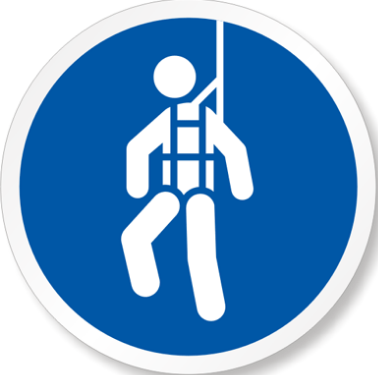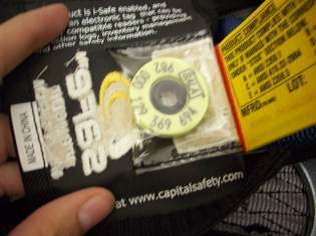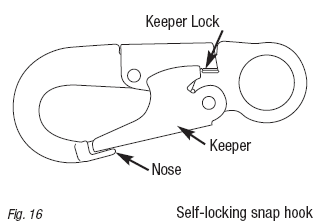Title Page
-
Site conducted
-
Prepared by
-
Conducted on
-
Client / Site
Full Body Harness
-
Reference Harness Serial Number
-
Serial Number
-
Run your hands over the hardware (D-ring, buckles).
-
Is the hardware free of sharp edges, burrs, cracks, worn parts, or corrosion and not damaged, broken, or distorted?
-
Check release tabs of the buckles.
-
Do they work freely and a click is heard when the buckle engages?
-
Look at and run your hands over the webbing and stitching.
-
Is the webbing free of frayed, cut or broken fibers? Tears, abrasions, mold, discoloration and pulled or cut stitches?
-
Are all labels present and legible?
Suspension Trauma Straps
-
Check the cover for damage and the connection to the harness for wear.
-
Free of any tears, abrasions, burns, discoloration, or knots?
-
Verify that one strap is marked “hook” and the other “loop,” and that they contain one of each type.
Lad-Safe/Tuf-Tug
-
Serial Number
-
Surface is free of any bends, cracks, and deformations?
-
Do all parts move freely and smoothly?
-
Free of any wear on the inside where the cable passes through?
-
Are all labels in place and clearly legible?
Lanyard and Self Locking Snap Hooks
-
Reference Lanyard Serial Number
-
Serial Number
-
Look at and run your hands over the webbing and stitching.
-
Is the webbing free of frayed, cut or broken fibers? Tears, abrasions, mold, discoloration and pulled or cut stitches?
-
Keeper Reference Picture
-
Does the keeper on the snap hook seat into the nose without binding and is not distorted or obstructed?
-
Does the keeper spring exert enough force to firmly close the keeper?
-
Does the keeper lock prevent the keeper from opening when closed?
-
Is the hardware free of rough or sharp edges, corrosion, burrs, cracks, dents or distortion?
-
Does the shock absorber show any signs of deployment?
Positioning Lanyard
-
Do you have a positioning lanyard? If yes complete the following. If no, sign and complete report.
-
Serial Number
-
Is the rope free of fuzzy, worn, broken, or cut fibers, as well as loose material such as dirt, sand, petroleum, or chemical contaminants?
-
Look at and run your hands over the webbing and stitching.
-
Is the webbing free of frayed, cut or broken fibers? Tears, abrasions, mold, discoloration and pulled or cut stitches?
-
Does the keeper on the snap hook seat into the nose without binding and is not distorted or obstructed?
-
Does the keeper spring exert enough force to firmly close the keeper?
-
Does the keeper lock prevent the keeper from opening when closed?
-
Is the hardware free of rough or sharp edges, corrosion, burrs, cracks, dents or distortion?
-
Inspector Name and Signature
















